-
Posts
183 -
Joined
-
Last visited
Content Type
Profiles
Forums
Resource Library
Events
Gallery
Blogs
Store
Community Map
Posts posted by 33lima
-
-
Multi-Purpose Diesel train - progress update
To recap, using bare Hornby Stanier bodyshells as a base, I'm making a 4-car UTA MPD set. There will be a power car, two dummy power car and a trailer, so that there will be three power cars for hauling freight trains if required. The powered vehicle will have Hornby a 5-pole SWB motor bogie, from an HST set but refitted with Hornby Calder Valley DMU bogie frames in a modified centre car chassis.
All vehicles will be from the first set of MPDs built by the Authority, as the coaches from which these were converted are basically Stanier look-alikes (the next batch had non-corridor slam door configuration; then came some with bus-type seating and narrow windows, then a final batch of double-ended power cars). The powered vehicle will be one of the 39-41 open third series; the dummy power cars will be an open third of the 40-41 series and corridor composite 42 or 43; while the trailer - nearly all MPD trailers, known as 'mules', had driving cabs - will be from the 529-534 series, which were corridor thirds.
A note on references
For reference, I have the works drawings via Mark Kennedy at the UFTM, many of which I photographed and uploaded to my RMweb gallery, here:
http://www.rmweb.co.uk/community/index.php?/gallery/member/15566-33lima/
Here are the (RMweb photos of the) drawings for the cars I'm building. As always, photos need used in conjunction with these - for example some toilet windows are absent in the plan views.
The set is to be finished in NIR maroon and grey. By this time they had lost the bowed rainstrips and the destination board mounts from their roofs and acquired new heaters which meant some spouted bodyside grills they didn't have earlier. Although some roof vents disappeared towards the end and they had long lost the curved plexiglass corridor connection covers first fitted to the MPDs, the original UTA publicity pics at Whitehead are still great references for most details, including roof ventilator layout.
For photographs and data, the main sources on UTA railcars are:
- 'Diesel Dawn' by Colm Flanagan;
- 'The UTA in Colour' by Derek Young;
- 'Irish Railways in Colour' by Tom Ferris (volume 1 only - unforgiveably, volume 2 left out the MPDs);
- '35 Years of NIR' by Jonathan M Allen;
- 'Rail runabout' by Sam Somerville;
- 'Irish railways Traction & Travel' (notably 2nd & 3rd editions) by the Irish Traction Group.
There are also some decent photos of MPDs in 'Irish Railway Album' by Colin Boocock, 'Irish Traction in Colour' by Derek Huntriss; and 'Railways in Ireland' part 2 by Martin Bairstow.
The model so far
Work has continued on the three stripped-down bodyshells prepared so far. Cab fronts have been laminated from plasticard sheet, with a thin later in front and a large opening cut in the inner layers to form a recess behind the windows, so the glazing will fit pretty flush. Retracted corridor connections were made and added. So far I have completed one cover, one with a small window and three horizontal ribs, which style was common from the early 1960s until well into the NIR era; two cars will have these, and two will have the plain board cover that was also common.
Headlights were added from cuts from a plastic tube, with the end dished or reamed out with the tip of a modelling knife before cutting off. Below these, a little square of plasticard each side formed the lamp brackets. Air horns will be made and added to the upper left cab fronts after painting, I think, so as not to get in the way of masking.
For the inner ends, a plasticard outer bulkhead was added, scribed to simulate planking. Corridor connections were added, with thick darning thread wrapped a couple of times around the outside to simulate folds. Rudimentart but robust support arms were added to the top each side and an outer frame cut and added to the outer end. The pic I'd taken about 1991 of trailer 532 at RPSI Whithead was useful, here.
Steps were added on one side from plasticard strip offcuts, plus some of the other fittings seen.
On the 36-39 series car, I added two small grills behind the cab on the LH side, made from thin sheet plasticard scribed, then cut to size, and finally glued on and lightly sanded. These grills I think appeared when new train heating systems were fitted. One of the snippets CME WAG Macafee told me about the MPDs was that train heating was always a problem; when going downhill water tended to flow from one linked water tank to the next and fitting non-return valves created other problems.
Also added were door hinges and handles, lost when the cab ends were sanded in to shape. Plus the same, for the guard's compartment double doors in the 36-39 series car. I need to add wire handrails to the guard's doors but that will come later.
Next and finally for this session I added roof ventilators, referring to those publicity photos which are by far the best reference I've seen for this detail, at least for the ex-'Festival' MPD cars. These are a mix of rectangular vents and a sort of drum-shaped vent axia type. The former has some subtle contours and I think can be represented quite well by just a small rectangle of plasticard, rounded by sanding. The vent axia types are made from a short cut from plastic tube fitted into a flat collar cut from plasticard sheet. It's hard to be sure but I think I've got the arrangements about right; each car in the set has a different arrangement. Exhaust pipes were cut from a cotton bud shaft and fitted into a hole cut in the roof at the cab end.
Next task will likely be the 4th car's bodyshell and then the power car chassis.
-
There seems to be something of an NIR building boom at the moment, if the forum is any indication, and for a change, the UTA's Multi-Purpose Diesel railcars are getting a decent look-in. Having nearly finished a power-twin set that I'd started back in the 1990s, I'm now building a 4-car set based on the original batch of MPDs. These were designed to handle Belfast York Road to Londonderry Waterside expresses and a good job they made of it too. They were converted in the late 1950s from LMS-style coaches built just a few years before for the 'Festival' express. While their advanced transmission gave trouble in later years - using MPDs to haul heavy overnight freight trains in between passenger turns didn't help - they were fast and ahead of their time, which is likely why they acquired the name 'Sputniks', the Soviet satellite being a synonym for all that was space age and modern, in those days.
Because of their close family likeness to LMS Stanier coaches, the initial batch of MPDs is a relatively straightforward conversion from a suitable RTR coach. Back in the early 1990s I built two 3-car sets, all from Hornby Staniers, finishing the first in NIR maroon & grey and the second, in UTA Deep Brunswick Green with frontal wasp-stripes.
This set is for member Train Model as a follow-on to his 70 Class set and while the donor coaches will be the same, power will come not from a modified Tri-ang Hornby Hymek motoe bogie, but from a more satisfactory Hornby 5-pole ringfield power bogie, taken from an HST chassis, refitted with Hornby Class 110 DMU bogie frames and fitted to a modified centre car trailer chassis from that DMU.
For the bodyshells I'm using some of the last of a set of unfinished shells, picked up 20 years ago. The Hornby Stanier is a 57' composite and while the length is fine, the window spacing will be a little out for some of the cars, tho it's hardly noticeable and not worth correcting. First task is to strip off the roof detail, both ventilators and the prominent ribs all have to go, a carefully-weilded Stanley-type knife doing the trick. Lots of sanding later and they're done.
Next, the cars need one or more windows 'plated over' - half-windows for a composite and open third power cars, plus a passenger window for the brake open power car. The Fourth car will be a corridor trailer or 'mule' as they were called, which I haven't started yet. Other windows need opened up, referring to works drawings and available photographs, including the UTA publicity photo pictured above.
Next it's time to start forming the cab fronts, from plasticard, using three sheets laminated, glued in place and then sanded and trimmed to fit. Windows can then be cut and the corridor connection built up between them. Before fitting the cab I cut away most of the bulkhead behind, leaving just the two vertical 'prongs' which secure the bodyshell to the underframe. The green MPD in the background is the recently-completed 'suburban' set, awaiting UTA crests and numbering.
Next task will be to make the cab fronts for the other two coaches, and make a start on the trailer.
-
Yup, lovely job alright, those old bomb-proof Mk2s are a great source for projects like this.
-
Gorgeous! That suburban sector livery driving trailer is a blaze of colour and nicely rendered, down to the NIR logo on the corridor connection cover's warning diamond. Super work. Keep those pics coming Colin!
Ivor
-
Hey Nelson I take it you mean what liveries for the 80 class P.C,s??? Have not decided yet but im open to suggestions from everyone on here as to what livery is the most liked....... Mad Colin lol
Going to all that mitre-sawing trouble, you might as well have sliced the passenger areas to get the closer, standard class window spacing but I daresay retaining the wider, first class layout saves a fair bit of time and extra hacking.
FWIW I think the 80 Class looked best on the late 1980s/early 1990s 'sector' liveries (or the follow-on 'corporate', unbranded intercity livery. The red & cream suburban looked well and so did the intercity grey and blue. Never liked the enterprise livery, too dull and a step back from the original NIR maroon & grey. The Translink-era liveries are smart but the front-end treatment is a bit crude by comparison.
With six power cars you can have 'em all!
Great projects, nice to see two UTA/NIR railcars get more of the modelling attention they deserve; can't wait to see the results!
-
I dunno what their official designation is, but they have been around for a while.
York Road 1991, & Bridge End, c.1992:
-
Nelson's already seen this but I'll post a link to my reply in 'The Other Place' as it may be of interest to anyone here who's researching old railways infrastructure in NI and who doesn't already know of the stuff available at DoE NI's Historic Monuments & Buildings Branch in Belfast:
http://www.rmweb.co.uk/community/index.php?/topic/89273-toomebridge-station/
-
OK, spurred into re-starting the stalled work on this MPD set by seeing Kirley's splendid efforts, which would have done Duncrue Street Works proud for output, I've been working again at this project, alongside the MED set in the other post. The results to date are pictured below.
In the foreground are the two bodyshells, the second one now having caught up with the first one with the addition of some minor details. Both have been painted in Rover Brooklands Green which is, I'm fairly sure - and despite the effect of the artificial light in the pics - the same colour I used on my original UTA models. British Racing Green is slightly darker and might have been a better match but (i) Halfords currently seems to have only metallic BR Green and (ii) the lighter shade arguably allows for 'scale effect', whereby a given colour looks lighter on bigger areas. It looks fine to me and I'm not keen to have my UTA stock in 'forty shades of Green'. Although I will get around to a set in 'eau de nil', at some point.
Yellow warning panels are Railmatch faded BR yellow but will probably want varnished before the black inverted V stripes are applied (I'll be using using waterslide decals I think and varnish will help them 'take'). Roofs are hand-painted with a left-over tin of Humbrol 102 which produced a nice grimy, greasy gunge-tinted grey shade. Both models have Roxey screw link couplings fitted to the cab-end buffer beams. I was unable to get air horns to fit under the RH buffer beam without fouling the front bogie so I think I'll leave them off, rather than fit them to the (later?) location above the LH cab window. This suits the Colin Boocock 1963 photo (from 'Irish Railway Album') that was my main inspiration for the set, which showed horns in the lower, buffer beam position.
Also finished, more or less, and sitting behind the bodyshells are the floor/chassis/seating units, one partial, to allow for the Tri-ang DMU motor bogie to fit ahead. The full-length unit uses much of the original Tri-ang suburban coach seating, whereas the other is entirely hand-built, as are both underframes, complete with rather more underframe detail than is really needed, given most is out of sight.
Both units now need glazing fitted and after that, the buffers and the wasp-stripes, that'll be about it, apart from some UTA coats of arms, which will be painted onto some decal film offcuts, as before. Another set I started back in the mid-1990s is finally about to see the end of the line!
PS I commented wrongly in an earlier post in this thread which I can no longer edit, that I thought the 'Diesel Dawn' MPD underframe detail sketch was mirror-image; but have since realised I was wrong, as I was looking at as if from below, when it's clearly captioned as a plan view, ie looking down from above! Sorry, Colm!
-
"I've started, so I'll finish" should be the motto of this build! It was begun about 20 years ago, when eBay was undreamt of, swapmeets were few and far between and Worseley Works' etched MED sides were many years down the road. At least, that's the only reason why I can think of now, why I could possibly have thought it a good idea, to try to convert a Tri-ang Metcamm DMU into a very different UTA railcar. That, and the fact that my first MED set, back about 1970 (foolishly sold along with my train set and stock in 1974) consisted of that very RTR model, repainted in maroon & white.
By the time I started this one, I had already made a model of a new-build MED using scratchbuilt plasticard bodyshells (which also got NIR livery) and a little later, a second set, this time in UTA Deep Brunswick Green, using a converted Hornby Class 110 DMU (which I bought as two unpainted bodyshells and some separate, centre-car underframes) with a Grafar suburban coach as a trailer.
I must have had a battered Tri-ang DMU sitting about unused back then so my third effort at the UTA's pioneering MED was based on that. I got most of a dummy power car finished before I temporarily lost interest (if you can call 20 years 'temporarily'). Basically, I chopped the DMU's sides free from the floor unit and re-assembled them, leaving gaps for the sliding doors and fitting a new floor to extend the length, which was very short. Windows were deepened and most pillars cut away, with new, plasticard pillars fitted in their place, referring to works drawings and photos, to create the distinctive window layout. This MED was to be based on the second coach conversion type, which retained the donor coach's high elliptical roofs but added new body panels with the distinctive ribbing, as carried by all but the first batch of MEDs.
Plasticard doors were made and positioned and footstep detail added. I had to raise the too-deep front valence and fill in the gap left for the tension-lock coupling. I also had to add partial valances to the front and rear sections of the side-soles, having decided to model the mid-1960s configuration by which time the main side valences, in between, had been removed. This also meant having to model a fair bit of underframe detail, using mostly plasticard with some wire and re-used RTR components. Bogies were some RTR spares, Bachmann LMS-type I think. Ribs were added to the rebuilt bodyshell using (lots of!) strip plasticard; it's too heavy but the intention was/is to sand this down a tad.
I had to extend the RTR Tri-ang DMU's roof to the correct length, with a plasticard inset, bent to shape. Roof vents are simple plasticard rectangles. Wire exhaust pipes were added each side,, turning up at the inner ends which were sanded flat from the angular bowed plan and small windows cut either side of the corridor connection. The cab front had also had to be re-profiled and the outer windows narrowed, before the ribbing was added.
I had just started the cab re-profiling on the powered car when I gave up, so that's where I re-started, earlier this week. You can see the results of the most recent work, with the extended roof and the cut and shut sides now done as well, positioned on long strips to create a framework, complete with repositioned pillars.
There's still a lot of work before she's caught up with the dummy power car but I'm getting there. Fortunately the Grafar suburban is a relatively easy substitute for a centre car and I've already done some work on one. I contemplated building a ribbed centre car and finishing the set in maroon & grey but settled for another slam-door trailer so she'll be in green, with wasp stripes, which is how I best remember these railcars.
-
Workbench today. Another MPD plus a Buffet Car to run with the MPD rake.
Will the end of this project ever come?
You might borrow from Charlton Heston's Michaelangelo's retort to Rex Harrison's Pope Julius in 'The Agony and the Ecstasy', at the point where the Sistine Chapel repaint project had gone somewhat badly over schedule:
Pope Julius [with exasperation]: WHEN will you make an END???
Michelangelo [with finality]: 'WHEN I AM DONE!'
Great work, keep 'em coming (pics AND MPDs).
-
Wow! A work of art, Nelson, which would grace any collection or any museum.
-
OK final set of pics before the set takes to the rails...sorry, the post, for Galway. Only work done since the previous pics is numbering cab fronts, flush-glazing the non-passenger windows in the power car and painting all buffers a dark metallic colour.
As with the 80 Class's farewell photos, the set is posed with my previous effort (far side) which dates from about 1995 and was powered with a Tri-ang Hornby Hymek power bogie, as that was about all that I could readily get my hands on at a modest price, back then. The new model, having a Hornby Ringfield job with a 5-pole motor and trailing bogie pick-up, should perform rather better.
The pics illustrate the difference between the Hornby LMS-style windows, un-modified, on the original set's trailers, and the correct, wider, BR Mk-2 width (?) windows on the new trailers, the lack of flush glazing the price paid for greater accuracy.
Last pic is a 5-car set, with the new set leading and two cars from the original set at the rear. All pics I won't be able to take again!
-
Great pics of a gorgeous layout. A little slice of Irish railways and countryside brought to life, and a fine model of 001 at the head of a good rake of authentic wagons rumbling through it; it's all there. Top notch stuff. This should be in a railway mag, if it hasn't already been.
-
Works of art - lovely models, all!
-
Wow! that's quite a model!!!
-
I'm sorry for interrupting gentlemen but that image that 33Lima has posted is rather interesting, is it a book? And is there any similar to that one of the MEDs showing steam locos?
Fantastic information btw gentlemen,
Hi Nelson
noted author and modeller Steve Johnson (whom I helped with some minor research for his Irish Railway Atlas & Gazeteer, after we corresponded while I was the editor for the early issues of 'Irish Lines') about 1997 produced these as part of a series of livery profiles, I think using scanned works drawings (he probably got the UTA ones from me, via the UFTM!). They may have been intended for publication. He used to send me a set of the latest versions for review. The final set I saw had about 6 pages of MED profiles and other pages of profiles covering the types I mentioned above (no steam locos). I don't know how it ended up - haven't been in touch with Steve for ages - but unfortunately if it was for a book it didn't get published. Fortunately I still have the ones he sent me, including the one above.
Ivor
Sorry to hi-jack your thread, Andy, keep the GN pics coming!
-
33lima, I'm certain no GNR railcar stuff ever got the "Catherwood blue", and equally no MED. I do think, though, that at least one or two loco-hauled coaches (GNR? NCC?) might have got it, and this would account for the "turquoise train" on the Bangor line. Alternatively, it could indeed have been an MPD set on trial.
At least one MED set run in the line green without red patches, but these sector liveries were so short lived that few might have seen it. I don't know which car number was like thick but once my resources are unpacked when my house move is complete, I'll be able to find out.
The GNR section livery had the same shade of blue - similar to GNR locos - for both "main line" and "suburban" sector liveries. Variations in pictures would be due to photographic variations.
The GNR used a much darker shade and at least one set made it into the sixties in original GNR livery, but with UTA red-hand crests and UTA-style numerals.
Since the 'turquoise train' I remember was definitely a railcar, then either my recollections are mixed up and it WAS MED14 in the cream-over-pale-green livery pictured in 'Diesel Dawn' or it was after all an MPD set being tried out on the Bangor line, contrary to reports in the excellent '35 Years of NIR' that MPDs only got to Bangor twice, in April 1977 on a football special and again in October 1979 on an RPSI MPD farewell tour. Given the UTA was known for experimenting with different railcars on different sections, I suppose it's fairly credible that MPDs were tried out on the Bangor line before the Middlepath Street bridge was dropped in 1965. The arrival of non-corridor and 'bus-type seated' MPDs in the late 1950s suitable for short high-density runs, turned out in 'Catherwood Blue', would tend to fit in with my Carnalea sightings, from the early 1960s sometime.
Incidentally I had a look at Stephen Johnson's colour profiles from the mid-1990s and he portrayed MED 14 in 'Catherwood Blue' with wasp stripes on the front. His caption says this was only applied to # 14, the same vehicle pictured in pale green with cream uppers, no wasp stripes and the overpainted Red Hand disc on front, in 'Diesel Dawn'. I don't know what Stephen's source was re MED 14 but this series of profiles was a work-in-progress 20 years ago so was subject to possible later correction. I trust if watching that he won't mind me reproducing this one sheet below.
Steve may have got further but by 1997 the coverage was MEDs, 70 Class, 80 Class, NIR diesels, some CIE/IR diesels, NIR Mk2s and CIE/IR Mk2s - if he ever did profiles for the GNR railcars I don't think I ever saw them, or found out where the project ended up, but it was an interesting and unique effort.
-
FWIW, my original 1992 blue & grey 80 Class (in the middle below) used Ford Polar Grey as a base colour, which was a little dark; whereas my recent one used Ford Dove Grey (which to my eye is a ringer for the base colour used with maroon on the 450 Class, but maybe a bit 'warm' for the 80 Class, tho I think better than the Polar Grey). The blue on the recent model as Humbrol 14 Gloss French Blue which is what I remembered using for the 1992 model, tho it looks different, maybe it was Humbrol 25 Matt Blue, varnished, on the 1992 model.
-
Hi Ral
I just use car aerosol grey primer from cans, Halfords in this case, acryllic.Seems to give a decent finish, without any 'orange skin' effect.
-
Right nearly done now! Test run went ok after cleaning wheels and track. Just needed to cut back one of the corridor connection arms which I hadn't noticed was sitting way out and caught the next coach on turns. I've found the gold waterslide transfers (Mabex bus numbers) in a box in the loft and if they are still usable after about 20 years I'll number the fronts of the power car and driving trailer.
I had already repainted the roofs before these last pics were taken, using a matt black spray as brushing produced a rather poor effect. I suppose the roofs should be mid-grey to go with the general ex-works finish but to me, a sooty and/or greasy black just looks right, with UTA or NIR railcars, and is how I remember them anyway. Conversely, I don't know if they ever painted the driving trailer's corridor connection cover maroon, but to me it looks better like this than sooty black or brown. This was, after all, the UTA's last railcar and it deserved a nice finish even if the roofs got dirty

Just need to fit the transfers (if they work!) and trim and re-fit the over-long corridor connection bracket then we're done.
Not exactly my favourite UTA/NIR railcar. And to be honest, as a kid I didn't even identify them as a distinct type from the MPDs, for all I saw of them in the late 1960s and early 1970s. But they have a certain presence and their engines, passed on to the 450 Class, have (assuming they weren't replaced) only just retired, over forty years after the 70 Class was introduced. At least they survive in model form, Colm Flanagan's original version being justly well-known ( http://newirishlines.org/2009/09/27/the-utas-finest-train/ ) and others can be seen made from Worsley Works etches, like a new set from Colm and another from David Orr:
http://www.worsleyworks.co.uk/Image-Pages/Image_4mm_Class70.htm
Here's to another class gone, but not forgotten!
-
Some other observations on railcar liveries:
- I don't think I have seen an MED or an MPD with plain green ends - they either had 'ivory' upper cab fronts; or that plus wasp-stripes; or just the wasp stripes. The only plain ends were those MPDs turned out c.1959 in 'Catherwood Blue' and by about 1961 these had wasp-stripes added;
- likewise I think the UTA's AEC and BUT railcars went straight from GN blue & cream to UTA green with wasp-stripes, tho I think one of the articulated sets acquired wasp-stripes on top of the blue and cream, first;
- credible captions indicate wasp stripes were in widespread use by 1961 - for a time on some cars, underneath the 'ivory' cab front uppers, in others and as standard, on a plain dark green (or 'Catherwood Blue') cab.
I would be fairly sure these were introduced after the court case which followed the accommodation crossing crash in 1959 in which brand-new MPD 58 was lost. The motorist was held mostly responsible but some blame was placed by the court on the UTA because hedges hadn't been trimmed as they might have, so visibility was an issue (reported in an IRRS journal). It is surely no co-incidence that wasp-stripes appeared soon after this court case.
Incidentally, photos in a Co Down railway society booklet I can no longer find had an article on this crash (or was it on the role of the steam crane) and some pics showed that 58 was in 'Catherwood Blue'. She was on her side, not quite on her roof, and as the late WAG MacAfee (later NIR CME) confirmed she was recoverable but was burnt out after sparks from an acetylene torch - being used to cut engine mounts to enable lightening and recovery - fell through a floor hatch and set fire to upholstery. A bucket or saucepan brigade from the nearest house was all the water available but didn't succeed in preventing the brand-new MPD from being burnt out.
- the 'white' (which I'm calling here 'ivory') that was used on upper cab fronts in the early 1960s (and before that, for upper cab fronts and other trim) was officially called 'Pale Green' and was a 'shade of white' with a very pale green tint. I suppose it's possible this was replaced some time by the late 1950s with a different, more white shade but Pale Green is what the colour was officially called (in the UTA's April 1952 booklet 'Multi-Engined Diesel Train Development') that was applied to the first MED set and it looks no less white, or off-white, than any shade applied to later MEDs or MPDs. So I think that description stands, unless there is written proof that a different shade was used.
The same booklet (a copy was available at the UFTM and the Linenhall Library, last time I checked; mine is a photocopy, courtesy of Mark Kennedy at the former) describes 'UTA green' as 'Deep Brunswick Green'. Notwithstanding variations in colour photographs, I'm not clear what the evidence is that the shade of dark green changed, over time; the slightly bluer cast on some (but not all) earlier photos can I think be explained by variations in light, film, processing, variations in different batches of what's nominally the same paint etc.
I THINK I've only every seen one pic of a vehicle - an MED slam-door trailer, in 'Diesel Dawn' - painted in maroon with the narrow grey side panel. Even the few slam-door 'suburban' MPDs that were repainted into maroon & grey before conversion to open seating - obvious candidates for the 'suburban narrow stripe' livery - seem to have got the broad grey stripe.
- I don't recall seeing a confirmed pic of a Bangor line bright green and cream 'sector' MED without the red 'artificial buffer beam. The most likely candidate seems this shot of a set led by 26 at Queen's Quay in the 'narrow band' version, which carries its number high on the cab front, not as was usual on the red 'buffer beam', indicating that it may have lacked this feature. Certainly, the red 'buffer beam' seems to have been the norm on this short-lived livery;
- were there two shades of blue in the GN sector blue and cream? There are so many photos, including some possibly taken at the same time, which suggest that the blue on some BUTs was darker, like what I'd call royal blue, while others, mainly AECs, had a more sky blue shade, more like the GN passenger loco colour. Were there two different shades of blue? I've no idea!
- and last but not least, what was the 'Turquoise Train' I recall seeing from near Carnalea in the early 1960s? An MED set in 'Catherwood Blue'? An MPD set on trials? Or an apparently unphotographed and un-remembered repainted GN AEC set on an excursion? The latter must be very unlikely tho it seems the likely candidate, a 'Catherwood Blue' overall MED set is also unphotographed and un-remembered (the one with cream uppers pictured in 'Diesel Dawn', MED 14, is close but doesn't fit the bill).
Noted modeller of Irish railways and author Steve Johnson in the 1990s compiled on a PC a fairly extensive set of coloured profile livery drawings of UTA, NIR and CIE diesels and multiple units, going through a few iterations as we discussed their accuracy. Possibly this was with a book in mind but they never made it into print or surfaced online. Steve's site ( http://website.lineone.net/~sjohnson40/IR1.htm ) no longer works on my PC beyond the home page and I haven't been in touch in ages but it would be great if he'd publish his profiles online somewhere. If he'd permit it, I'd scan and put on flikr the set I have.
-
Another superb job Ivor.
From your extensive knowledge what was the usual formation of a Class 70 Set? Am I correct in saying the original Set had two Power Cars and it was not until the 70's that Driving Trailers came into use? Any clarification is welcome please.
Hi Kirley
The first two driving trailers (711 + 712) were completed very early on, and the colour pics of the first 70 Class's unit's trial run from York Road in 1966 that are featured in 'Diesel Dawn' and 'UTA in Colour' (taken by Derek Young I believe) show this is a three-car set with a driving trailer at one end. So in that sense, 'the original set' was a 3-car one. While a 6-car set, with a power car at either end, was intended to be the normal consist for main-line work from York Road to Waterside, 3-car sets were used from the beginning too - the latter book has a pic of a 3-car set on a Larne line service in 1967.
Colm Flanagan in 'Diesel Dawn' says that the original plan was for two 6-car sets and two 3-car sets with the rest in reserve but with the addition of an 8th power car and the realisation that 3-car sets were often more useful, more driving trailers were built or converted from trailers, two in 1968-69 (713 & 714) then two more in 1976-77 (701 & 703).
A nice colour pic in MHC Barker's 'Irish Railways Past & Present Vol 1' [was there ever a Vol.2?] shows what appears to be a 7-car set (possibly including some ex-GNR trailer conversions) led by NIR-badged 77, leaving Dublin on the Enterprise in August 1969.
-
Here's how Steve Johnson did it a few years back, albeit starting with the Hornby 57' Stanier compo look-alike - see Issue 6, Spring 1994, page 14:
http://newirishlines.org/archive-2/
-
Cheers Andy. My distinct railcar memories start with the wasp-stripe era, tho I recall seeing an 'ivory' upper on a railcar with a corridor end leading as it negotiated the bridge at Bridge End just beyond Queen's Quay which must have been no later than about 1961-2. And some eau de nil stuff at Yok Road - and that elusive 'Turquiise Train'. I know many MPDs were turned out in that colour from new from about 1958-9 and wonder if one of those was tried out for a while on the Bangor line, tho they say there were only two MPD visits to Bangor and neither fit that period. But when no less than Richard Whitford doesn't remember the 'Turquiose Train' (I quizzed him in the mid 1990s) I begin to doubt my sanity...

PS Richard kindly had me down to see his railcar slides when I was researching the MEDs and MPDs back in the early 1990s. He was quite happy for me to photograph the projected slides with my trusty Praktica BX-20, directly from the projection screen. I'm sure he won't mind my reproducing these GVS ones for a fellow enthusiast. Naturally these don't reflect the quality of the originals which are copyright, Richard Whitford. Moderators please delete if I'm doing anything unmentionable! Richard's pics are a wonderful source on those long-gone days, especially as regards the railcars at which many seemed to turn up their noses.
.png.c363cdf5c3fb7955cd92a55eb6dbbae0.png)

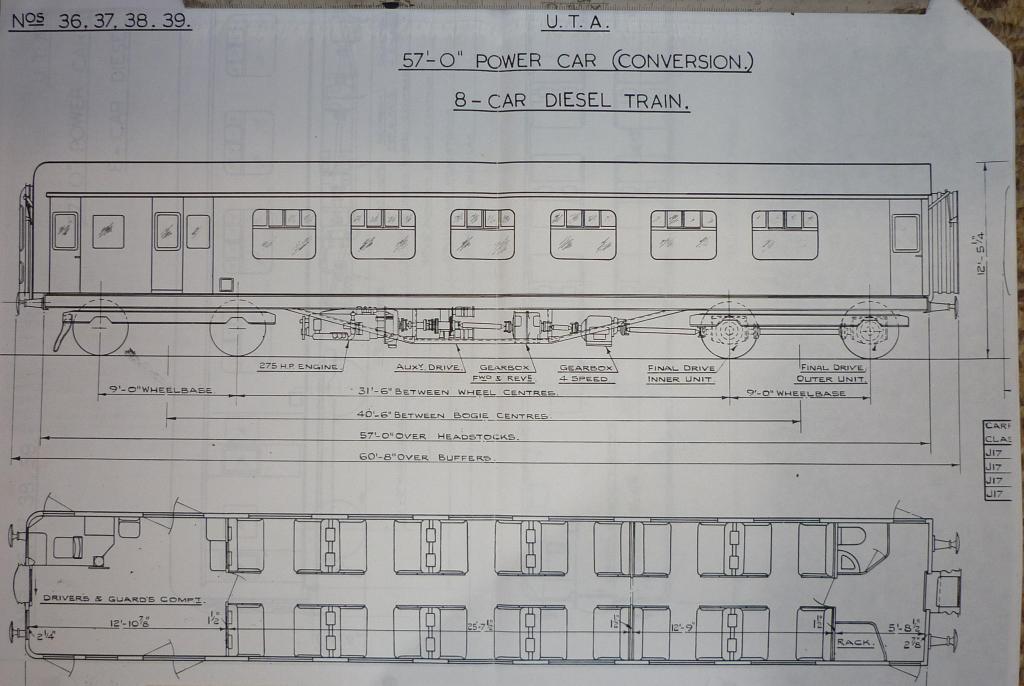
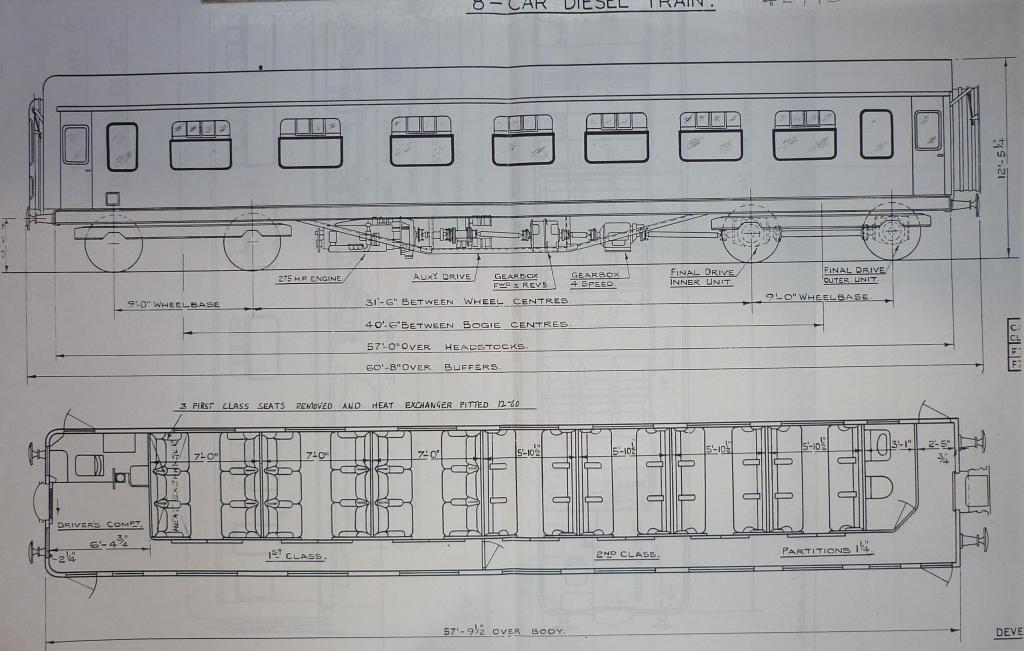
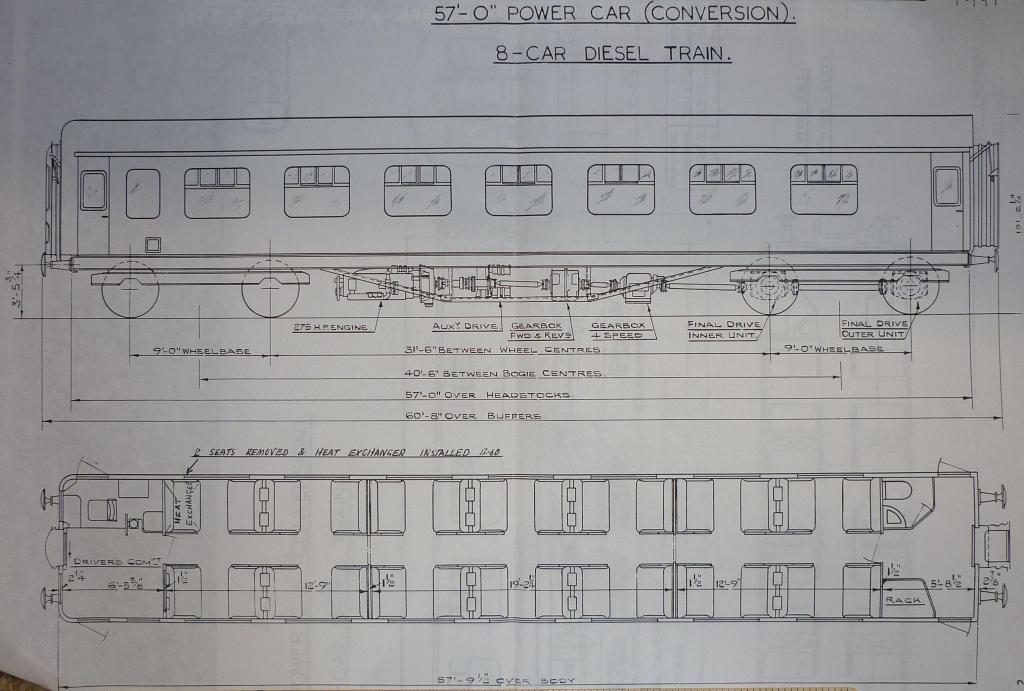
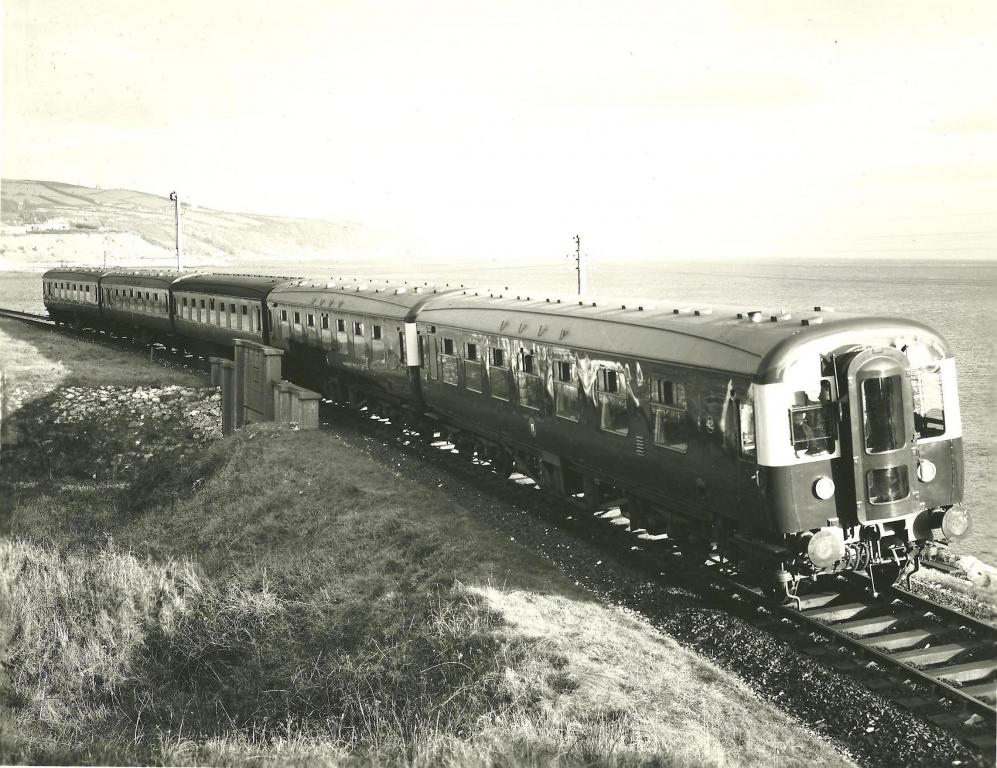
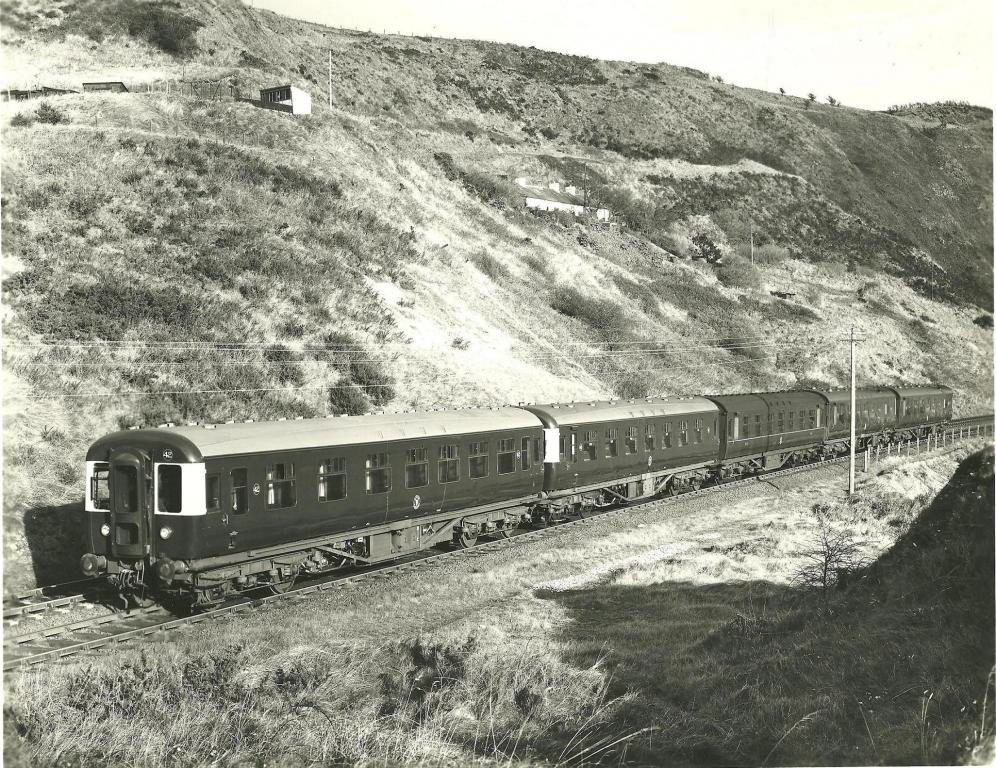
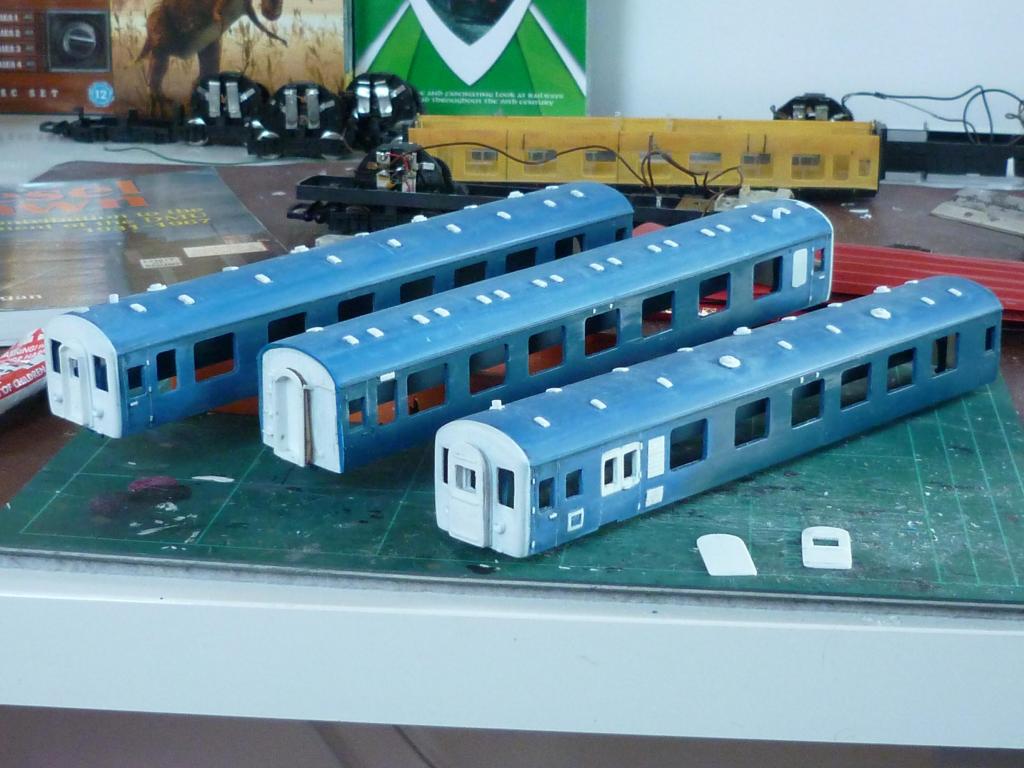
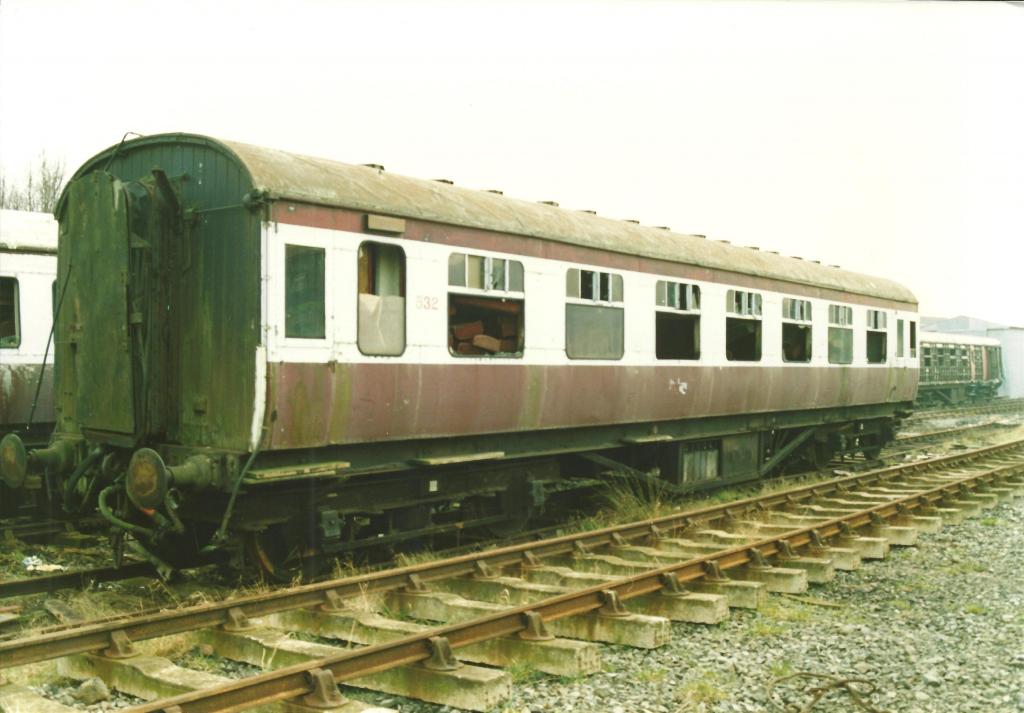

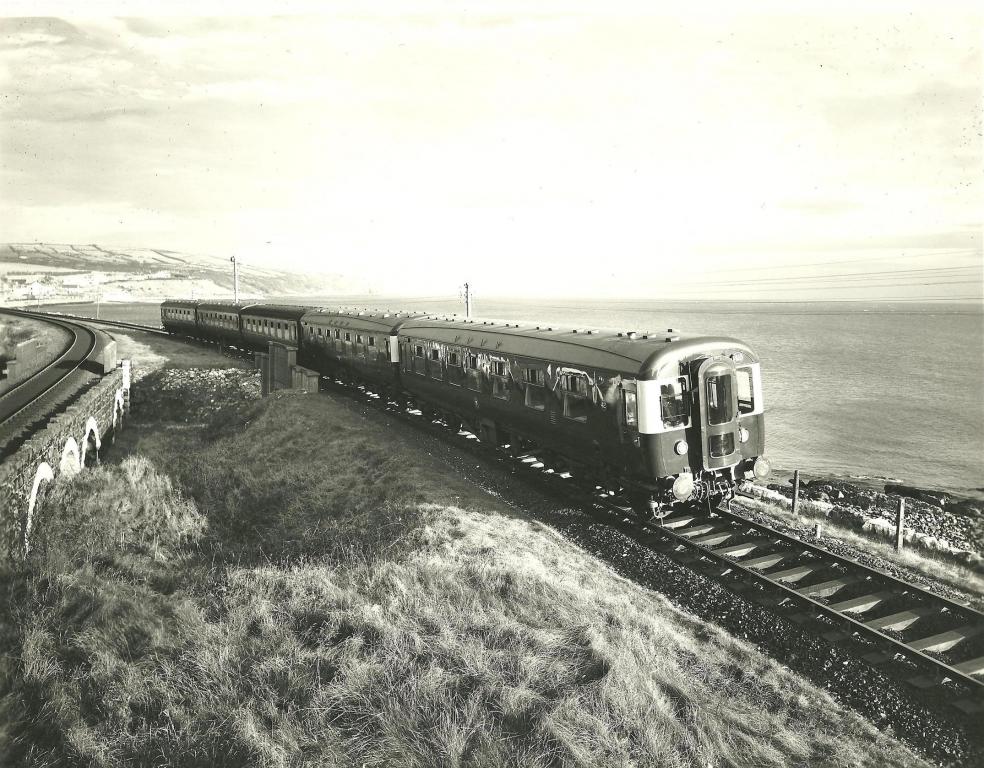


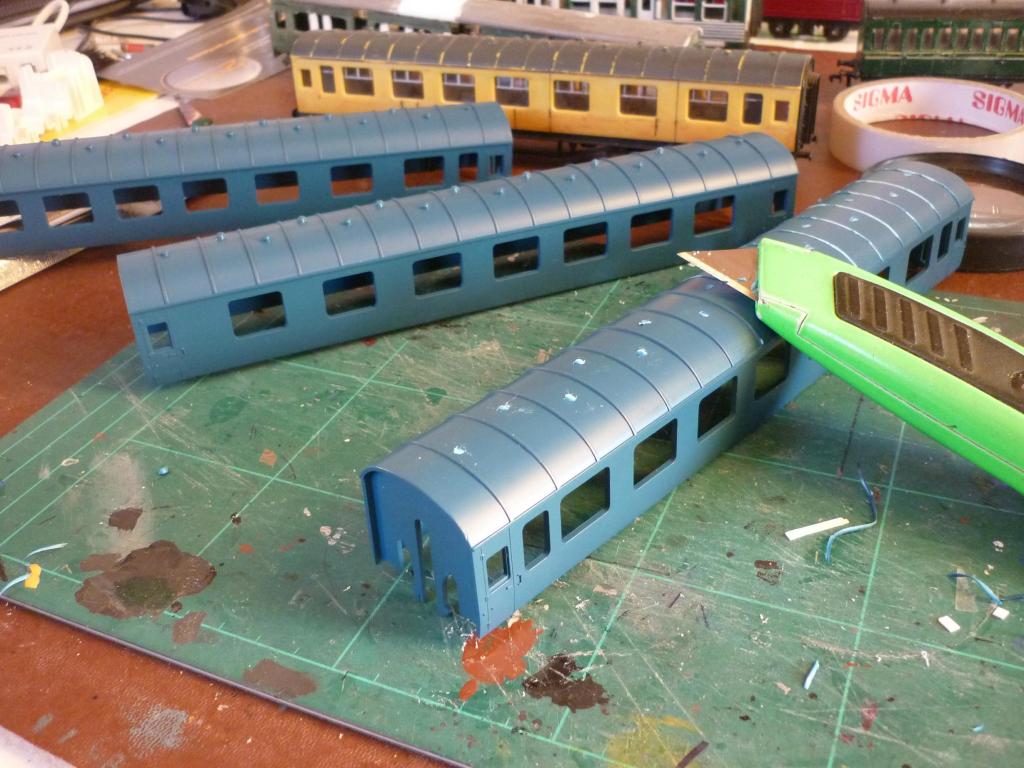
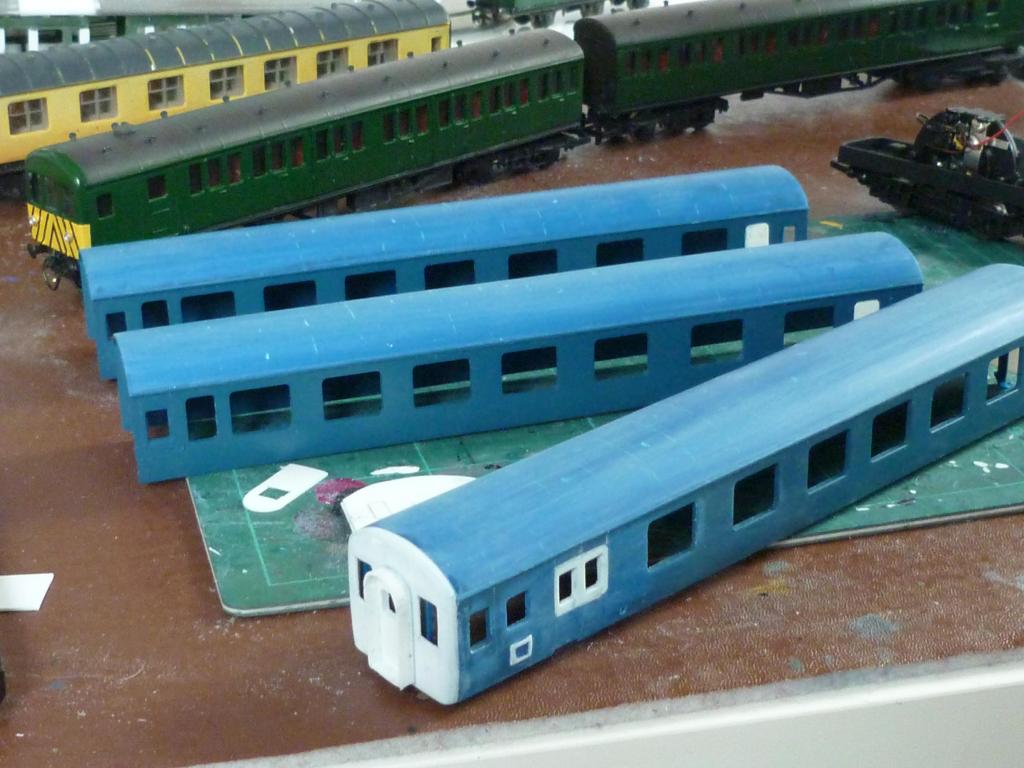
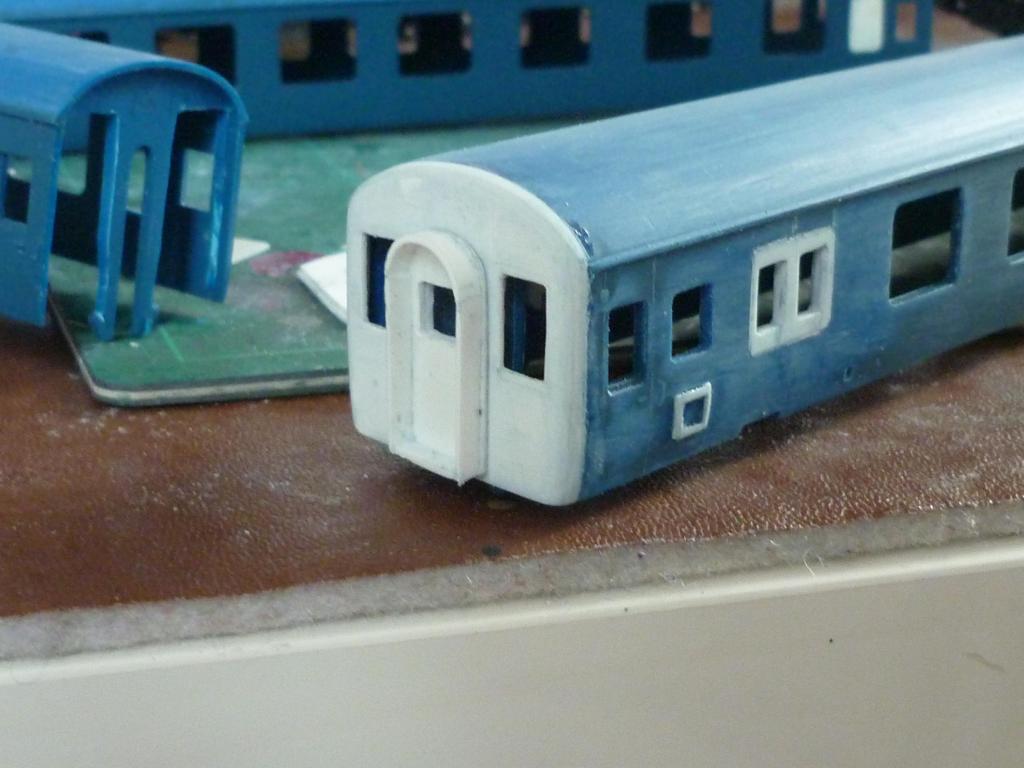
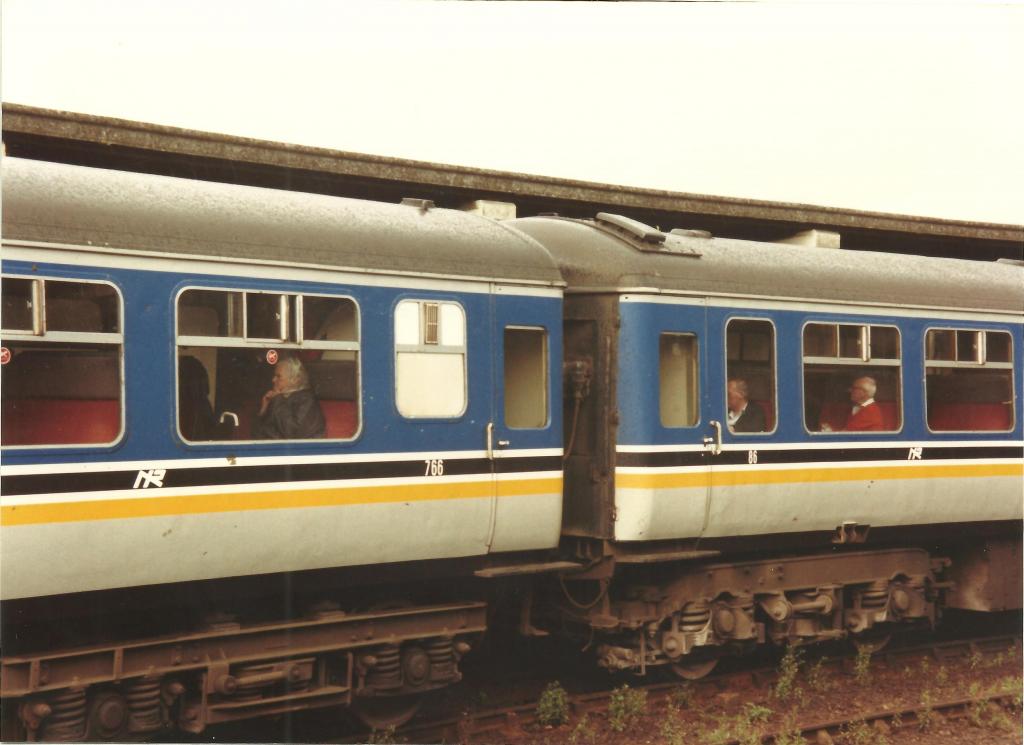

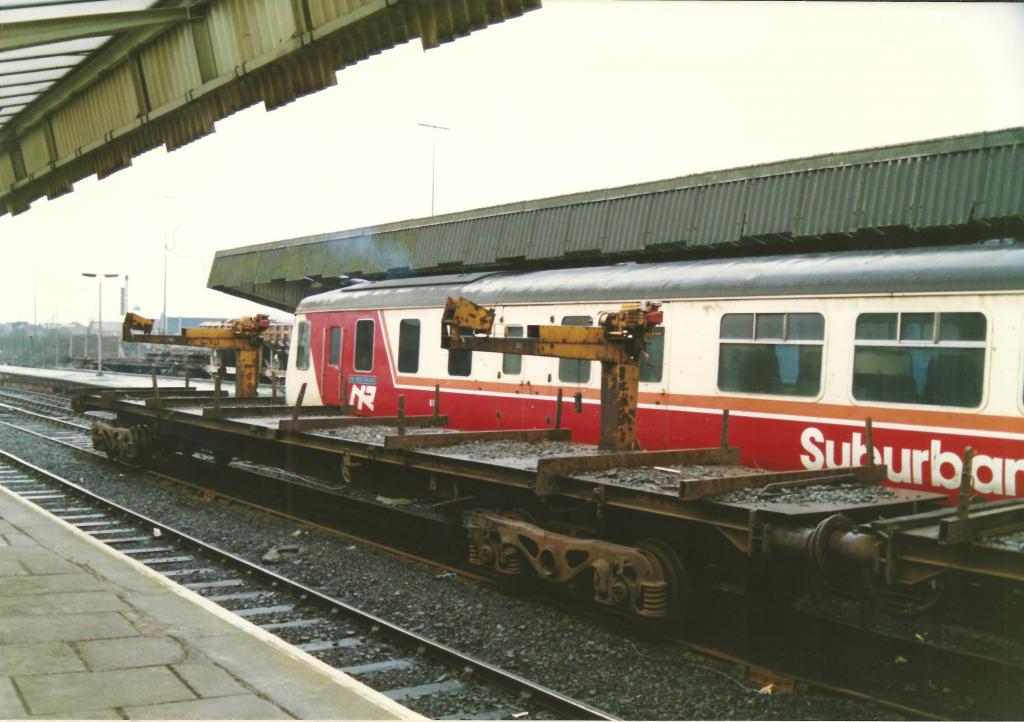
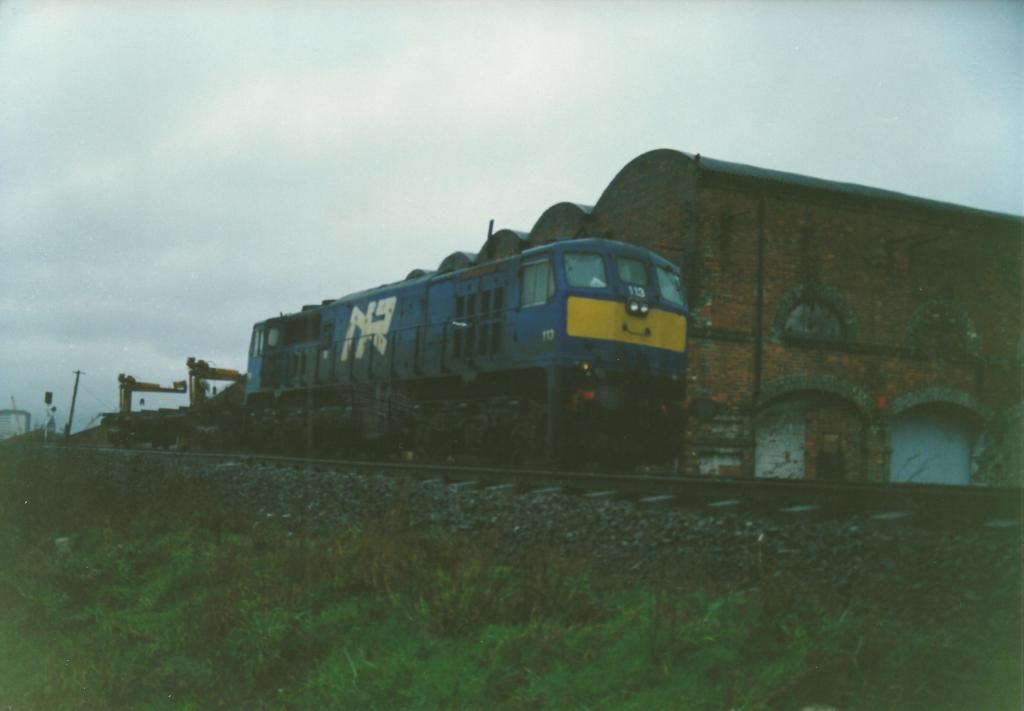
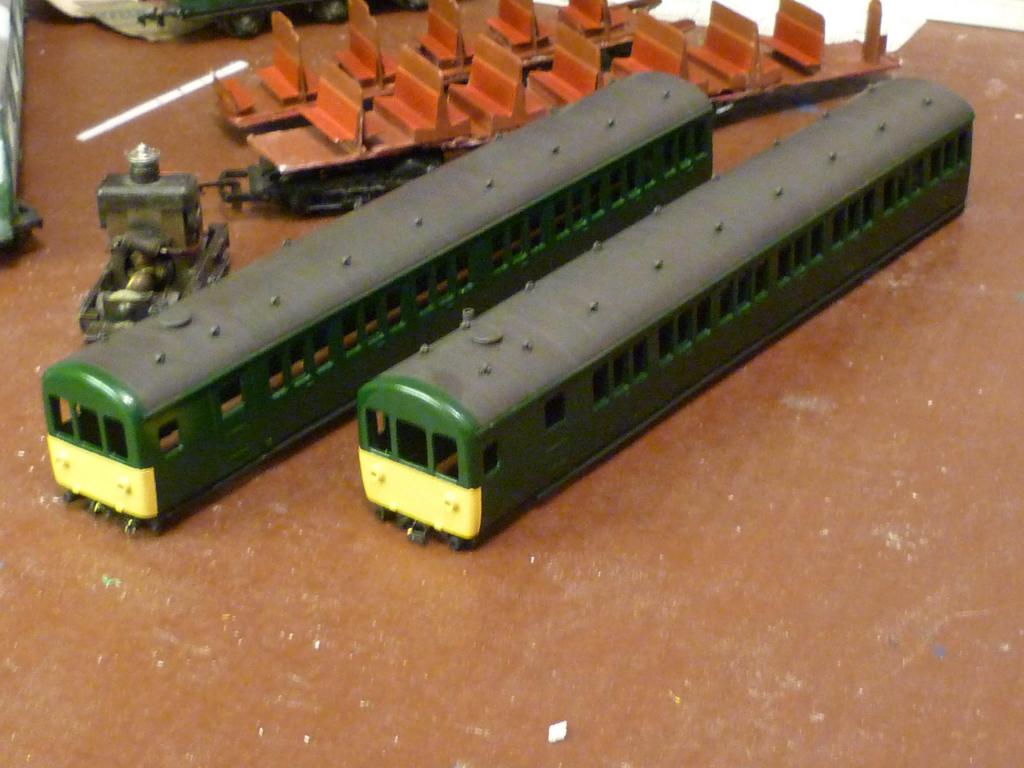
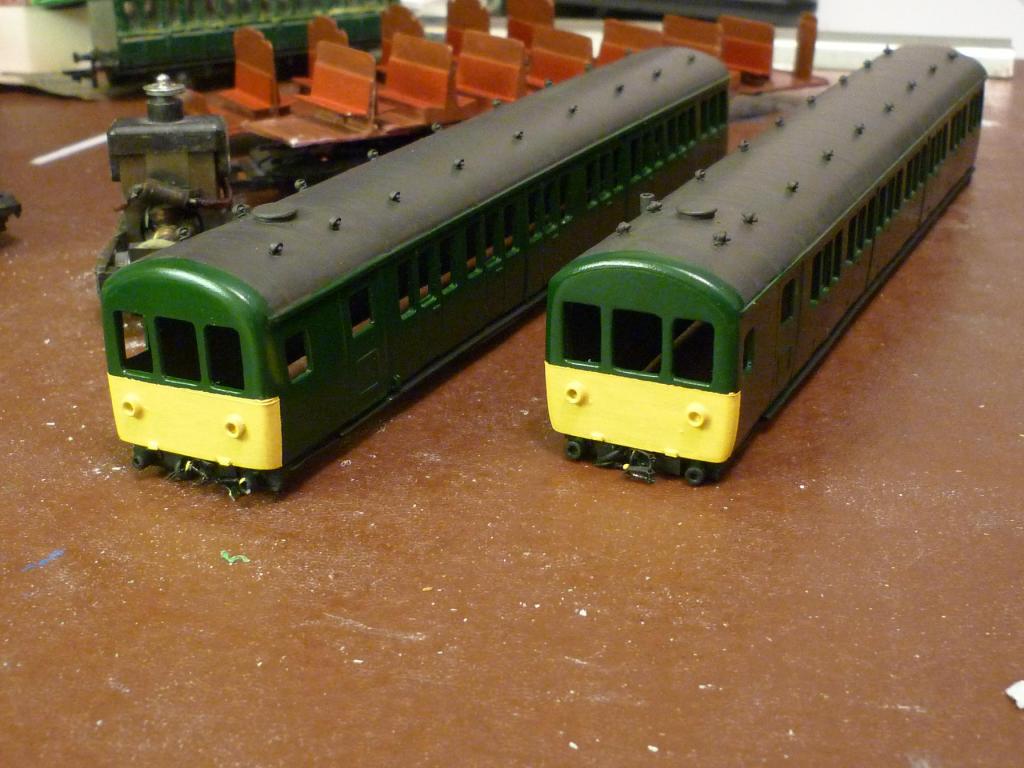
.jpg.fc4d3651e5e9bff35d2d0c378c88ee7f.jpg)
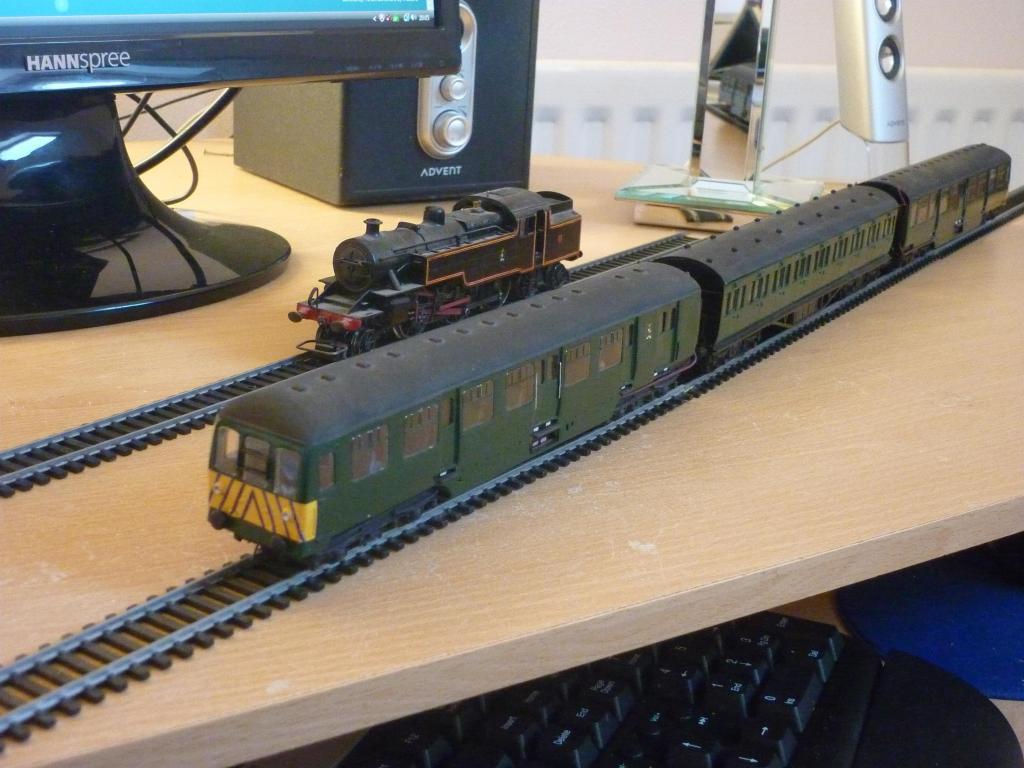
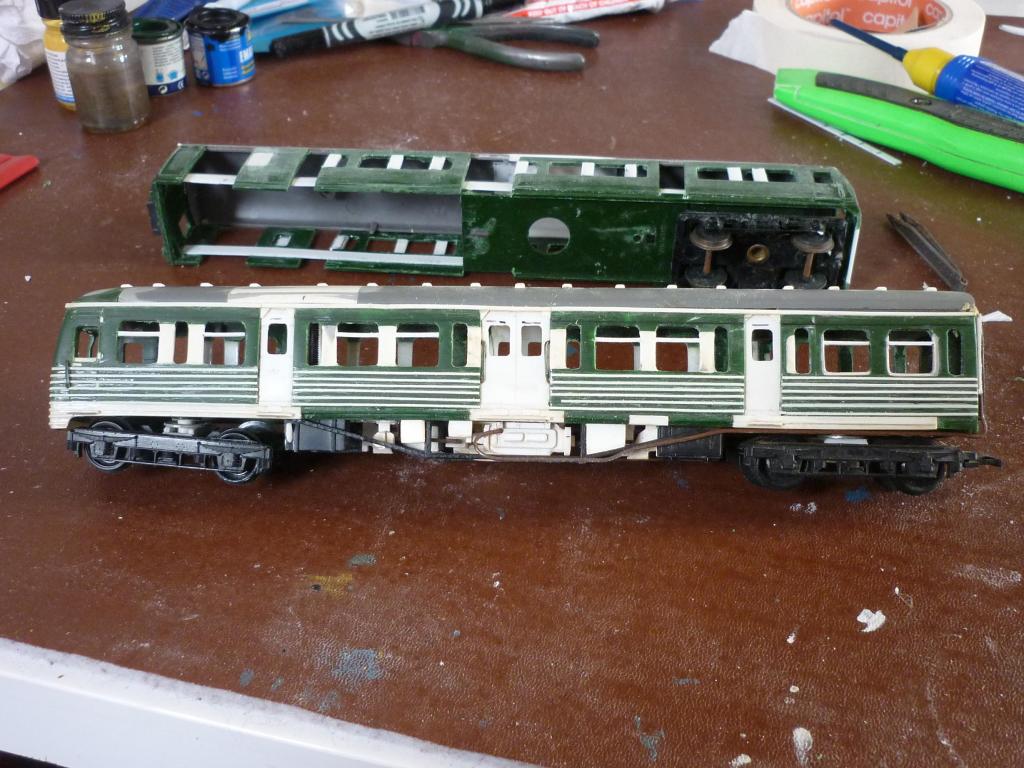
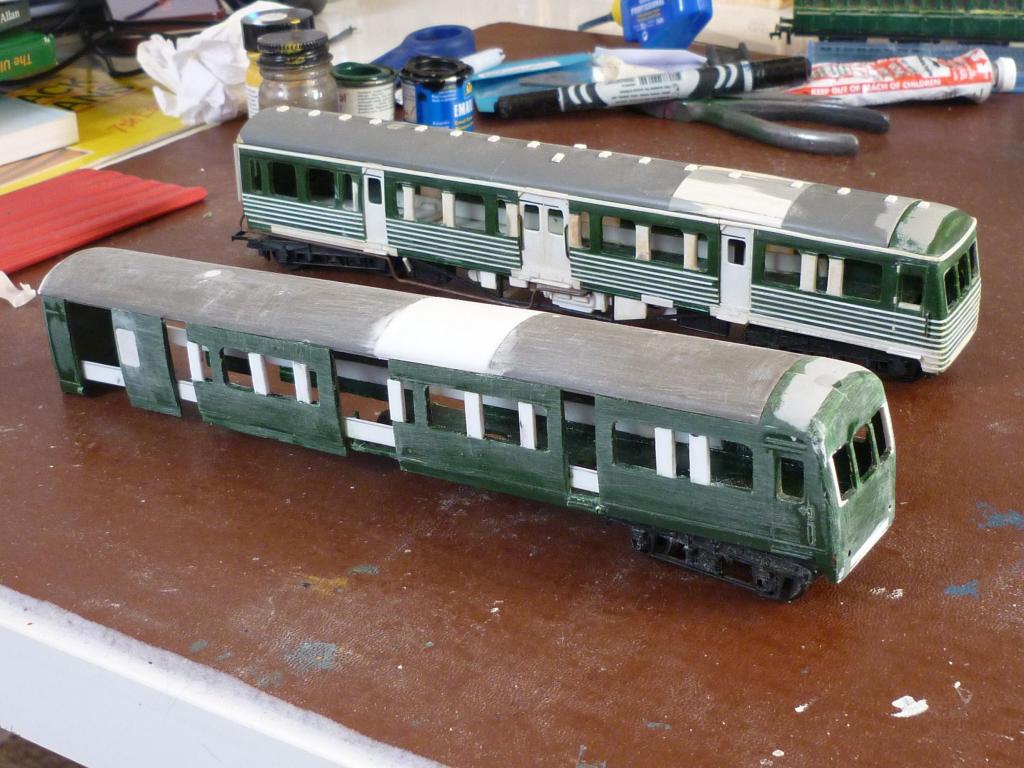

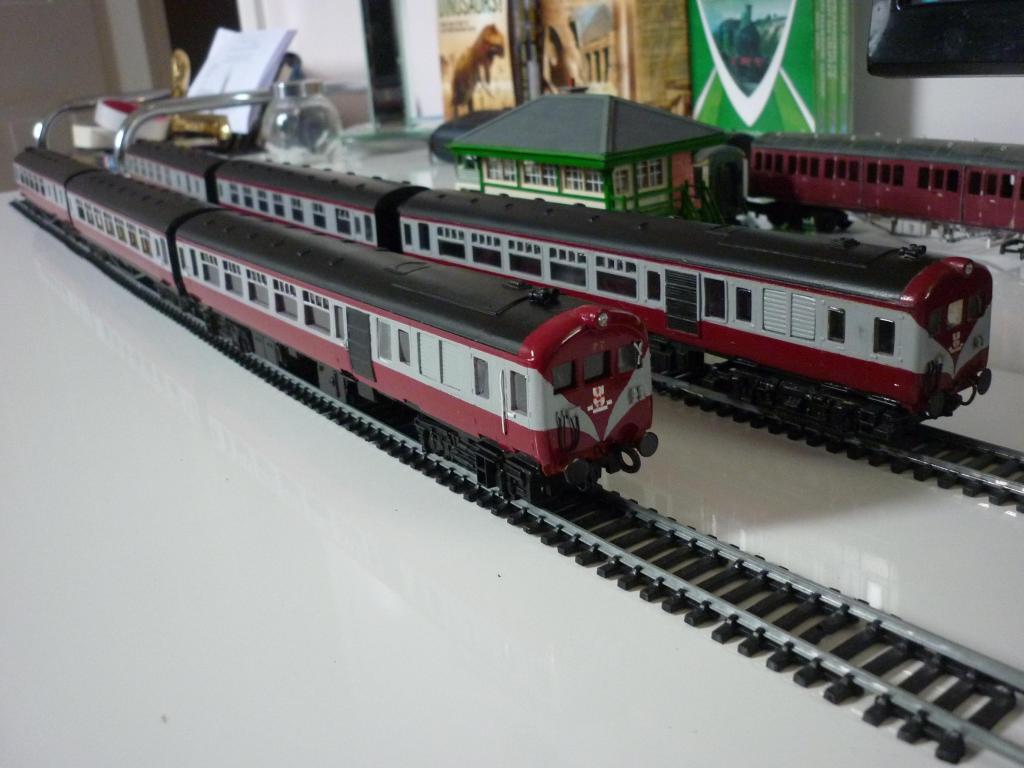

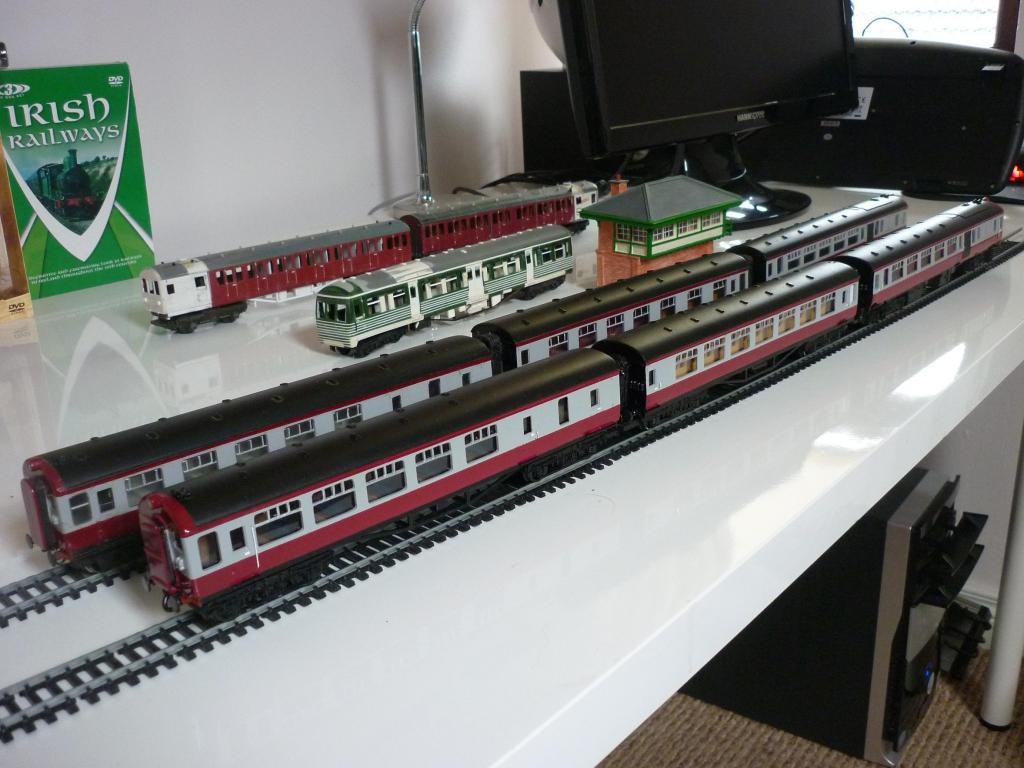

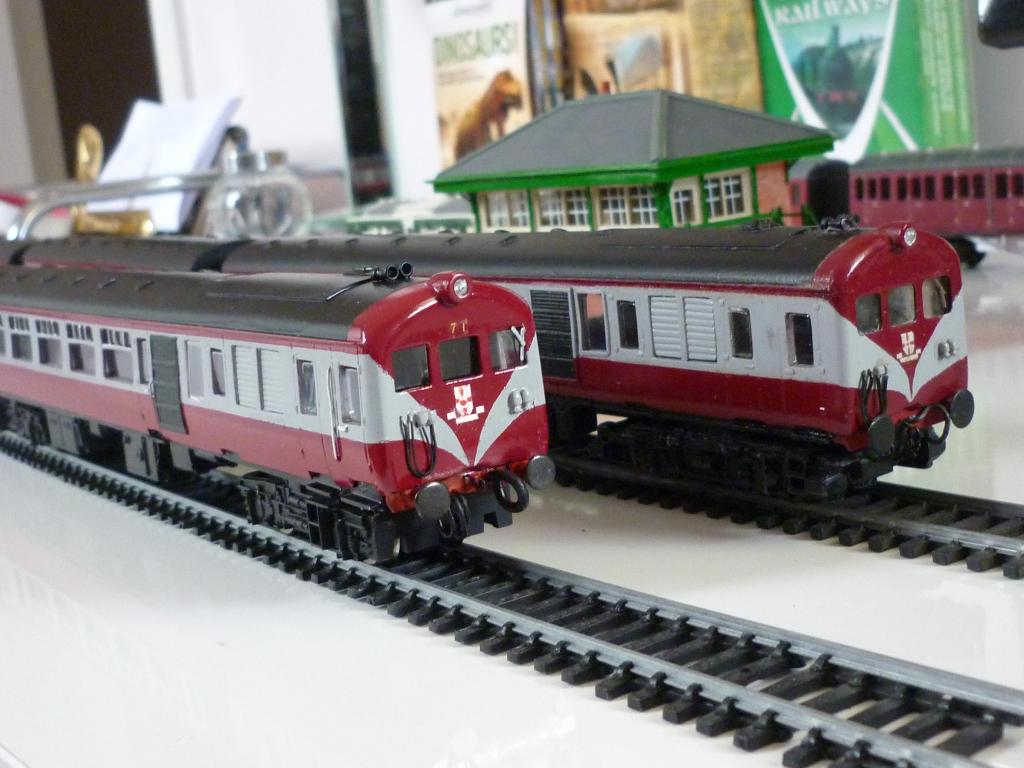
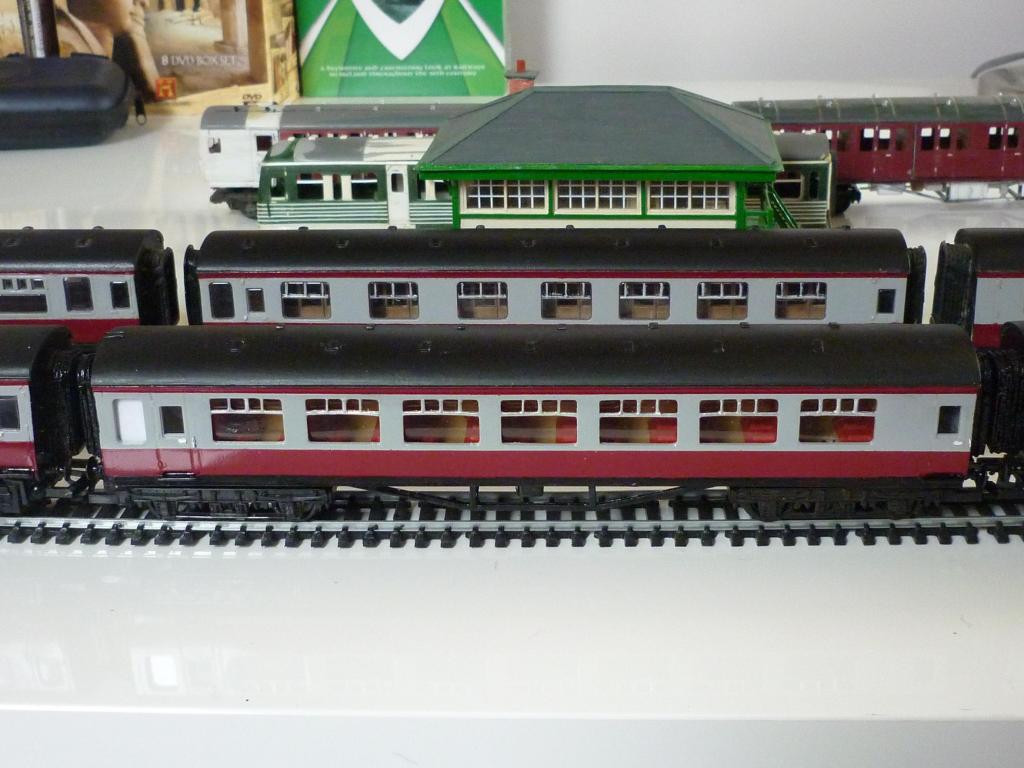


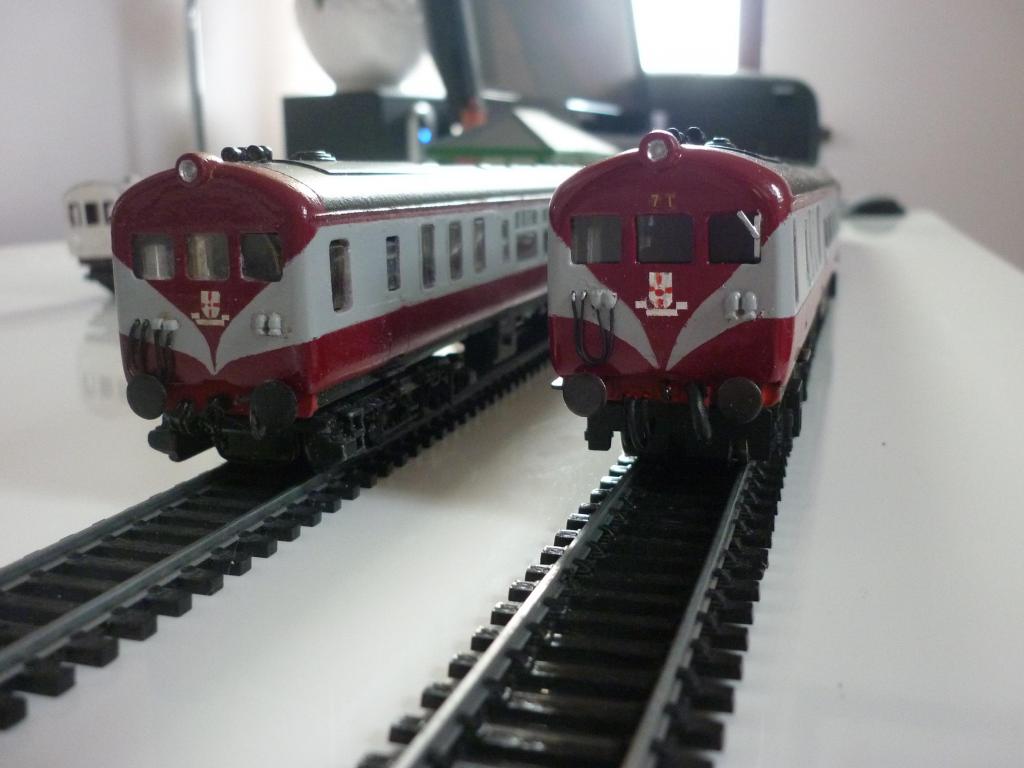
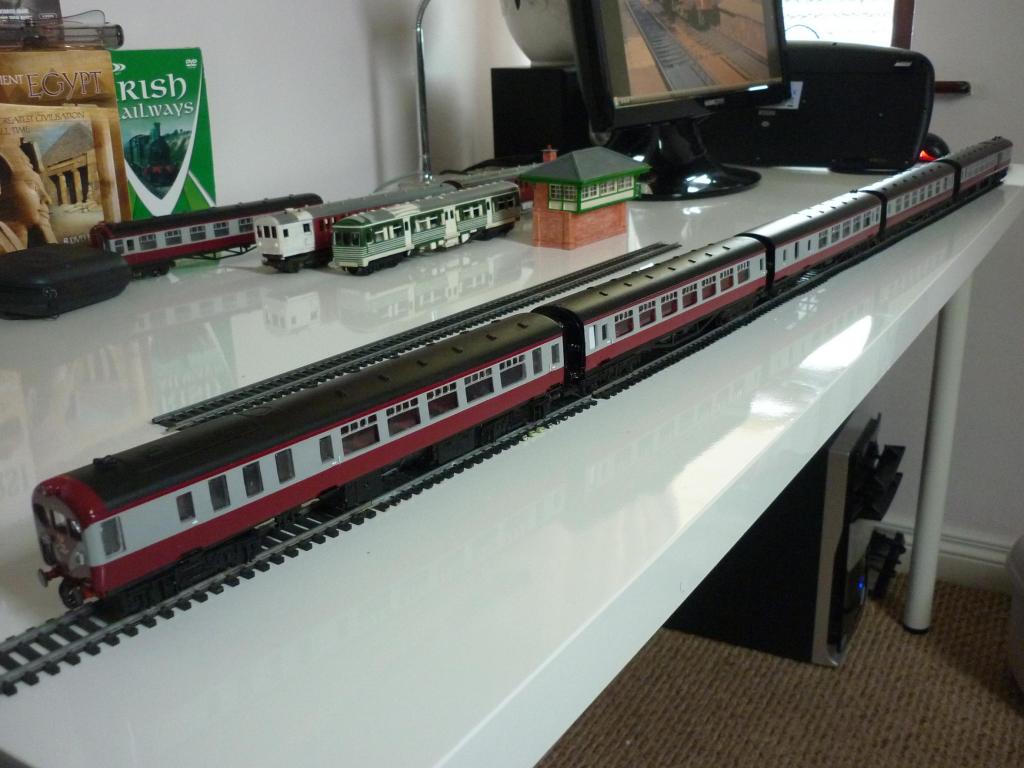






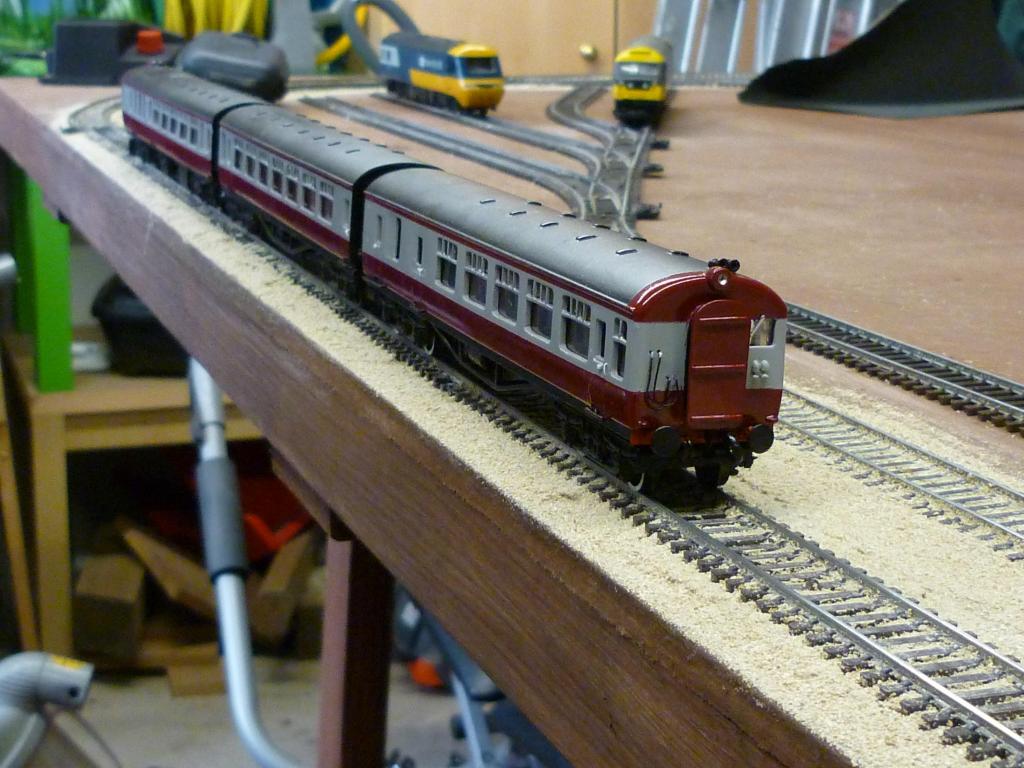
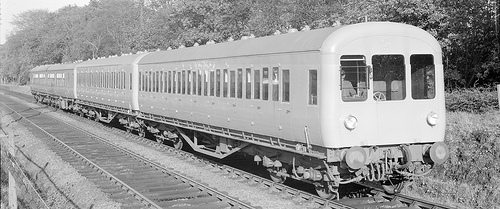
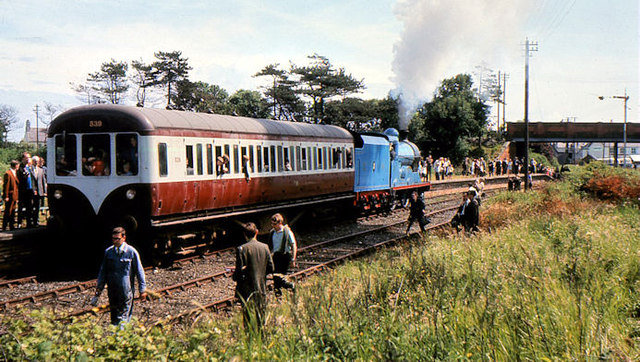
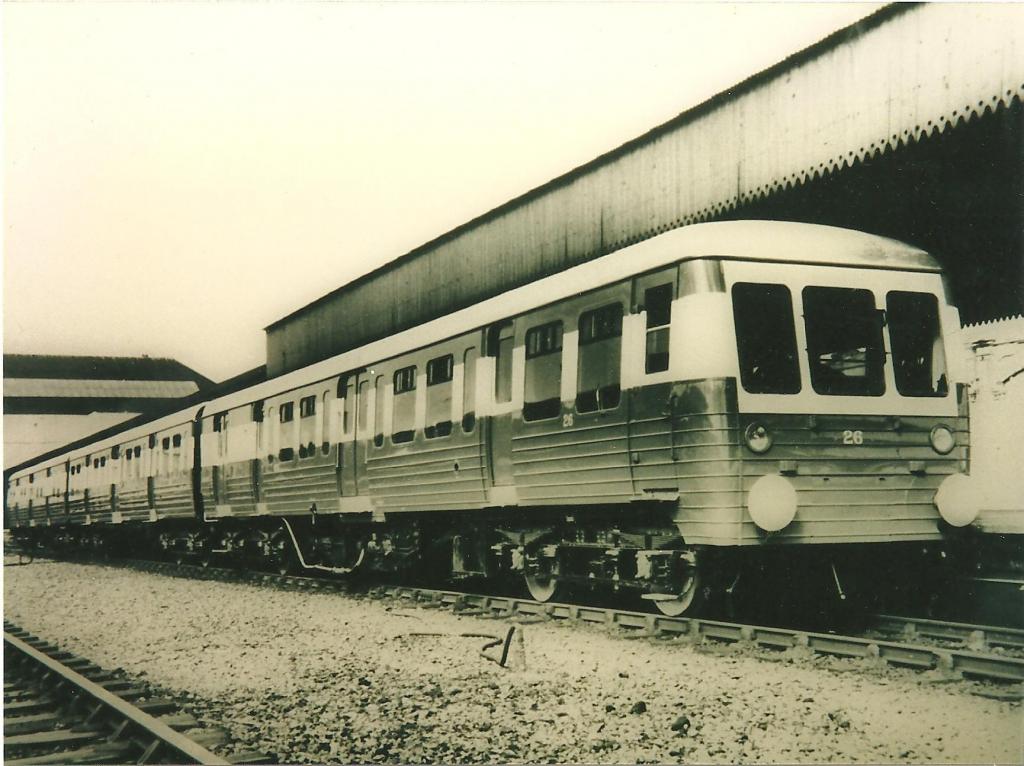
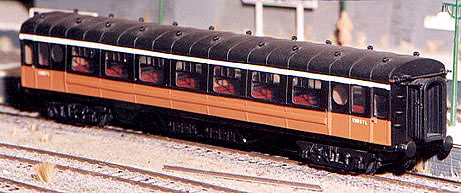

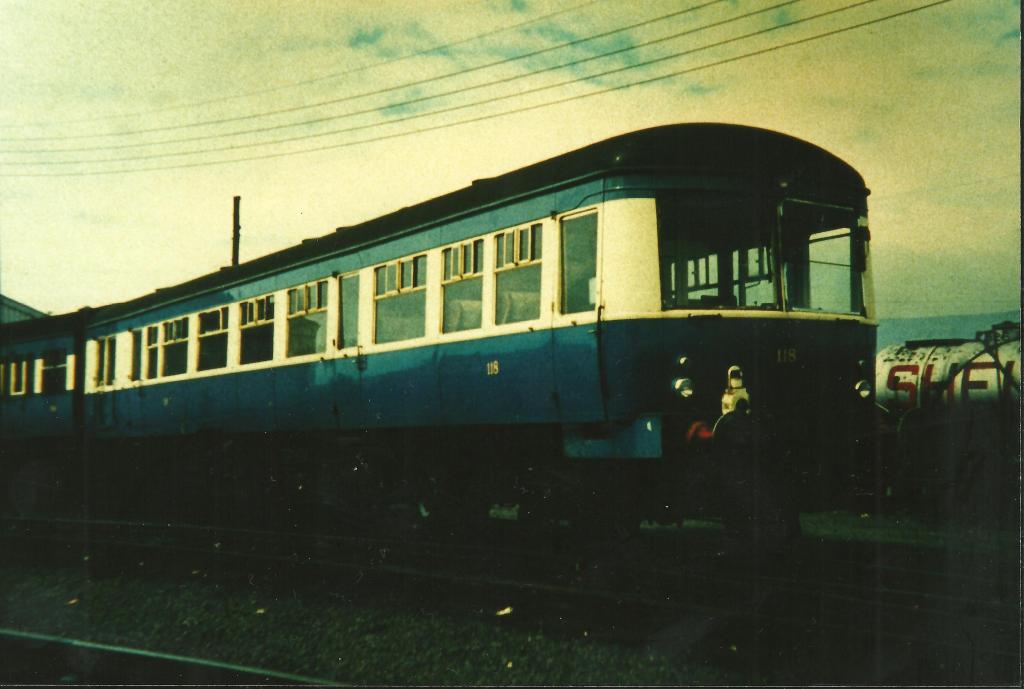
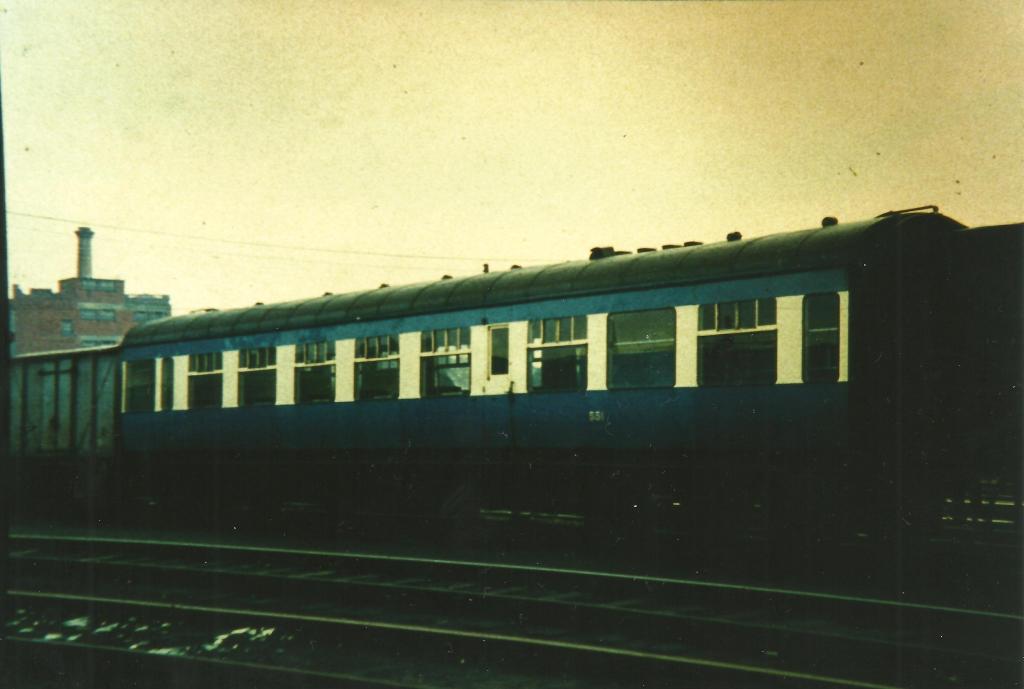
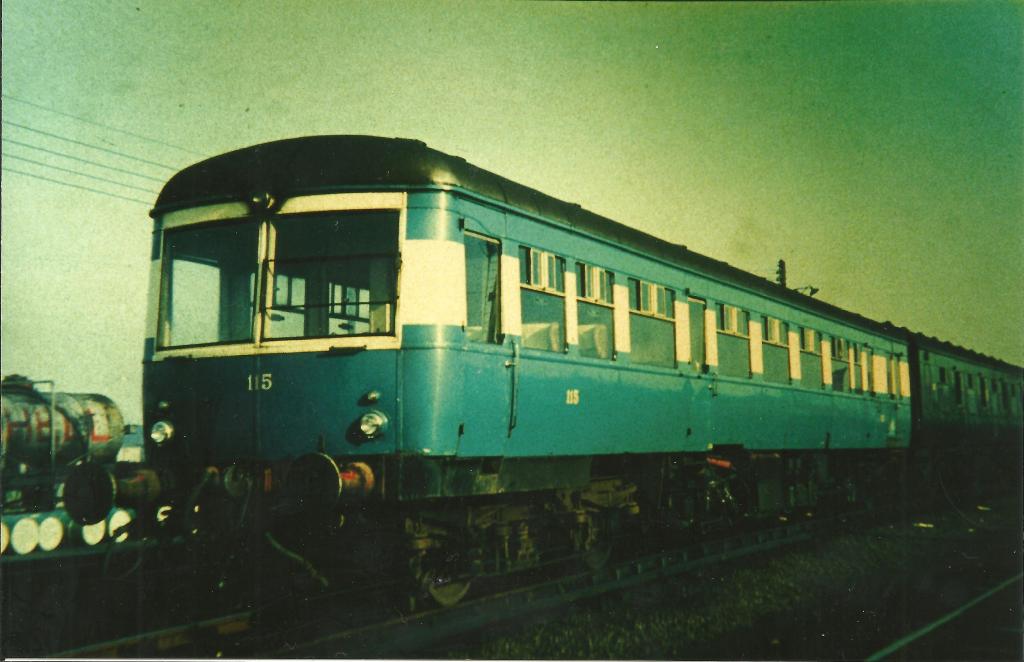
UTA 'suburban' MPD set
in Workbench
Posted · Edited by 33lima
OK, here's the final model, barring numbering. Should have dusted her before taking the pics but never mind! I have fitted etched brass 'fold-up' screw link couplings to the outer ends and plasticard double steps to the cab-end bogie frame sides. I had run out of wasp-stripe paint (!!!) for the lower cab fronts so used lining transfers blacked over with a marker.
I have some Mabex UTA 'red hand' roundels but for the 1960s I needed the later UTA crest, like this:
Decals for these are now available commercially I gather, but for now I'm using the same home-made waterslide decals I made for my previous models. I still had some left-over lining transfers with a few mils of transparent decal material around the edges. So I dipped the end of a bit of thin but stiff wire in grass green paint and carefully marked in a roughly shield-shaped oblong, then another green oblong running left to right below this. After doing four and waiting for these to dry, I used the same wire to mark out lines to simulate the red lion on the left of the shield and the brown Irish elk on the right. A dark metallic blob above the green shield simulated the helmet and three tiny spots of yellow formed the crests or feathers above it. Finally a white diagonal band was applied to the green shield and three ting strips of white to the grass below it. At some point I'll likely get some of the commercial transfers but for now I'm happy enough with the home-made version.
I think I preferred the British Racing Green that I believe I used on previous UTA railcar models, which is very close to the colour I used this time (Rover Brooklands Green) but fractionally more blue-ish. Not much in it tho and I'm fine with the result. Another 'train from Memory Lane' joins the stud, which for me, is what it's all about.